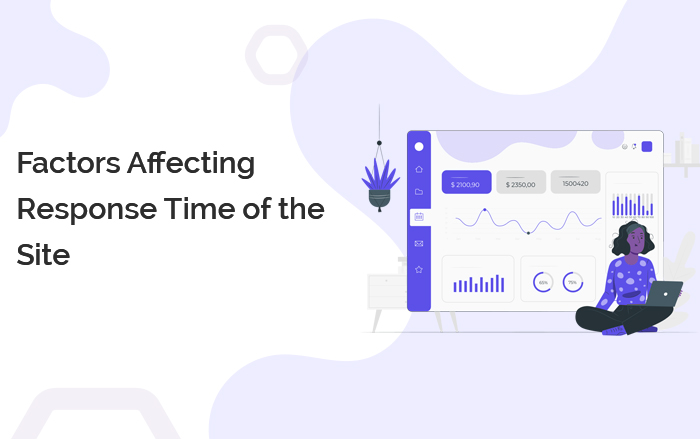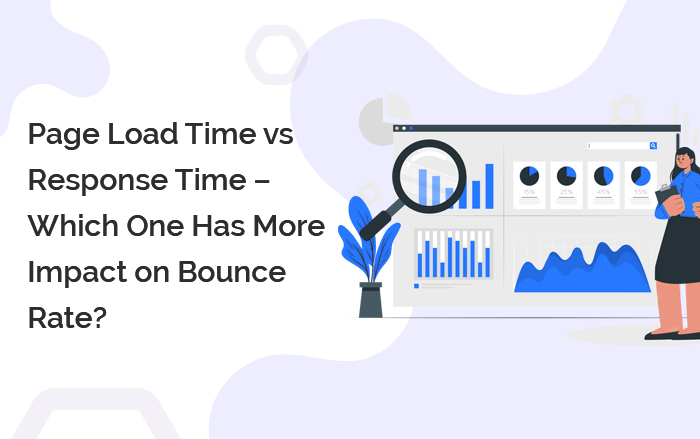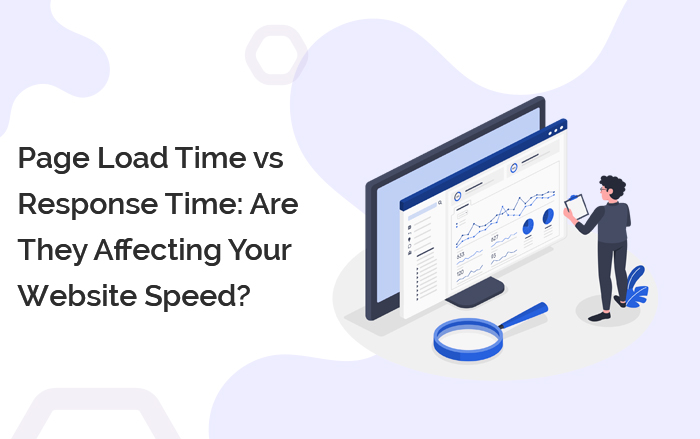In this Blog. we discuss about Website speed depends on tons of metrics. Two such key metrics are Response Time and Page Load Time. Page speed reports created by popular tools like Page Speed Insights and GTMetrix mention both these metrics and suggest owners improve their WordPress site speed and performance to ensure a better user experience.
What makes your site better perform in the search results can be determined by how fast it is responding and how long it is taking to load once clicked. Thus, both metrics can affect your website speed.
They can’t be taken for granted. Response time and load time, both need equal concern to speed up a slow website.
The fact that response time and load time have differences, however, is often considered as same.
Therefore, it is crucial for you to first understand briefly what website response time and page load time are and how they are differentiated. will further discuss factors that affect them and which one has more impact on the bounce rate of the users.
What is Response Time?
in the analysis, response time can break down into five essential parts, Response time is defined as the time it takes your site to respond to user queries from the server.
-
- DNS lookup – The time it takes to resolve the hostname to its IP address is defined as the DNS lookup. If your website’s DNS lookup time is high, there will be an issue with DNS servers.
-
- Connection time – Connection time refers to the time it takes to connect to the server. These are usually used to identify network latency. Network or routing issues often come from high connection time.
-
- Redirect time – It is the time taken for any HTTP redirects and any extra DNS lookups or connection time throughout the process.
-
- First byte – It is the time taken by the first byte of data to transfer. Slow first-byte time shows issues with the server load. Reducing TTFB will help you improve the FCP of your website.
-
- Last byte – It is the time it takes to download the final server response. A bandwidth issue causes problems in the Last byte. Thus, to resolve that, you need to upgrade your bandwidth to increase download speed.
The response time cycle is illustrated by these five points.
Uptime monitoring helps in the testing websites from 100 plus data centers located around the globe. In other words, It can report down your site’s response times and alter you if any outages come in. and if your response time is also defined as the time to the first byte, the time at which your browser receives the first byte of data once transferred from the server.
Factors Affecting Response Time of the Site

Four important factors affect the response time of the site:
1. Slow servers: Firstly, The slower the server, the slower will be your site’s response time. Make sure to choose better hosting for your website to respond to the requests in the quickest time.
2. Downtime: Secondly, Uptime is the time during which a server handles operations and requests. So, downtime refers to the time when your website server has low uptime or does not being functional, As a result, your website shows less optimal response time.
3. Low Bandwidth: Thirdly, At Low bandwidth, site servers aren’t able to handle a large number of requests. This leads to a low response time.
4. Traffic fluctuations: and most importantly, If the traffic of your website fluctuates from time to time, and if your server can’t able to handle this traffic fluctuation loads efficiently, your site speed can go down. Moreover, Unlike page load time, response time doesn’t account for the time it takes to load all the elements on a webpage.
What is Page Load Time?
Most importantly, page load time is the time your website takes to download and display webpage content to the visitors in a browser. and this covers the whole time taken by all elements on the page to be completely loaded. This includes loading time by HTML, CSS & JavaScript, and other third-party resources.
specifically, the page load time starts from the user’ requesting a web page URL and ends with the browser completely loading the requested web page.
- The user requests a URL from a browser.
- The processing of the request on the web server and sends a response back to the browser.
- The browser starts receiving page content.
- The browser loads the page content for the user.
All the facts have been presented and, as can be seen, the results are clear
How to Calculate Page Load Time?
Google Page Speed Insights can help you measure page load time. Pick a web page that you want to measure and study the speed insights that it will provide you within a few seconds.
Thus, All you need to do is paste the URL of your website or webpage and it will provide you opportunities to determine how fast the webpage loads and areas of improvement.
Factors Affecting Page Load Time
Here are four factors affecting the page load time of the site:
1. Page weight: Page weight is determined by the number of images, resources, code, and other third-party scripts. So, if your website has high-quality images and heavy scripts, the web page will have more page weight. and the higher the page weight, the more time it will take to load a page by the browser.
2. JS and CSS Elements: JS and CSS elements loads dynamically to slow down your website. The number and type of elements impact your page load time.
3. User location: Users’ proximity affects the loading time. The closer your users will be to the location of your website server, the lower the will be load time.
4. Browser: The browser used for Web page loading also affects the page load time.
Above all factors affecting the page load time of the site
How to Improve Web Page Load Time?
You can improve your web page load time by image optimization, removing unnecessary plugins, CSS/JS minification, and many other effective ways to boost speed site and conversion rate.
Core web vitals – FID, CLS,& LCP are also considered as the significant factor to get a high web page speed. First, measure the performance of your core web vitals and take some effective actions to improve them.
Oftentimes, using the fastest WordPress themes and fewer plugins also helps in improving page load time.
In addition, To get an automatic speed optimization solution, you can use a speed optimization plugin specifically designed for WordPress users. It can help you fix slow and lagging web pages within a few clicks.
Page Load Time vs Response Time – Which One Has More Impact on Bounce Rate?

Page load time and response time both Similarly are crucial metrics to be monitored to give you insights into the user experience and bounce rates of the visitors. If response time or load time is higher than the ideal average time, your visitors can bounce back or wait too long to have access to your website content. Dissatisfied users will cost you in leads, sales, and conversions.
Here is the data to look for. Pages with 1 – 3 seconds loading time will see the probability of bounce rates increasing by 32%. In other words, Pages with 1 – 5 seconds loading time will see a 90% increase in bounce rates. after monitoring response and page load time, you need to ensure your pages load quickly and efficiently by fixing all the related issues.
Final Words
In conclusion, To improve your site speed, insights getting by monitoring page load and response time will be helpful. Both are key indicators to be taken care of to perform better in SEO, conversions, and user experience.
Gather all the data after monitoring and analyzing response and load time to make necessary improvements to your website. With this, you will be able to keep your website functioning at its optimal level.




Yes, server response time does affect conversion rate because it affects the user’s perception of how quickly the site is loading. If the response time is too slow, the user may feel frustrated and start looking for other options.